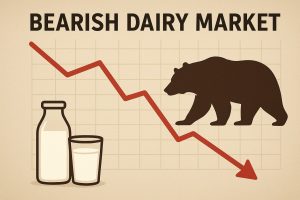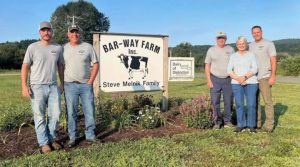
Steve Shehadey waved at the front desk crew, walked past white walls filled with plaques and awards and settled into his office, piled high with papers: invoices, permits, spreadsheets. On his desk, there’s a milk crate he found in an antiques store and an old butter-churning machine.
As owner of Bar 20 Dairy Farms, Shehadey oversees all operations at the sprawling family enterprise. The farm covers about 5,000 acres of crop fields in California’s fertile San Joaquin Valley, husbands thousands of dairy cows from infant to milking age, and offers very, very little shade.
This summer, the dairy won a major sustainability award that has attracted plenty of media attention and made Bar 20 the paragon of sustainability in the industry. Shehadey is proud of the distinction.
He says he’s trying to make Bar 20 as close as possible to having no environmental impact, which in the age of climate change requires him to master the vagaries of agricultural efficiency and become an energy entrepreneur, turning vast quantities of methane captured from cow manure into biogas he can sell or use as fuel. Yet none of it will ever be enough in the eyes of the environmentalists and academic experts who say the only real way to keep dairy farming from warming the planet is to stop the practice altogether.
For all his climate and environmental consciousness, Shehadey isn’t going there, and thinks about the existential issues of dairy farming like this: “We feed our valley, the Central Valley of California.”
























